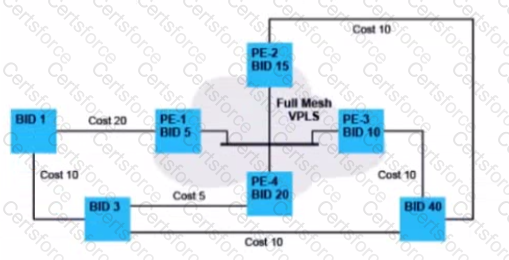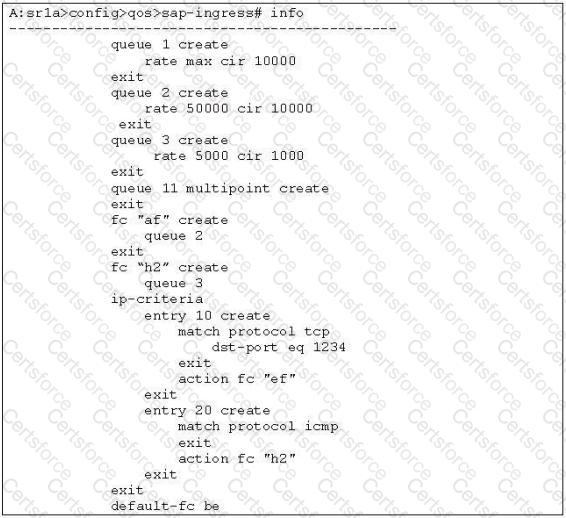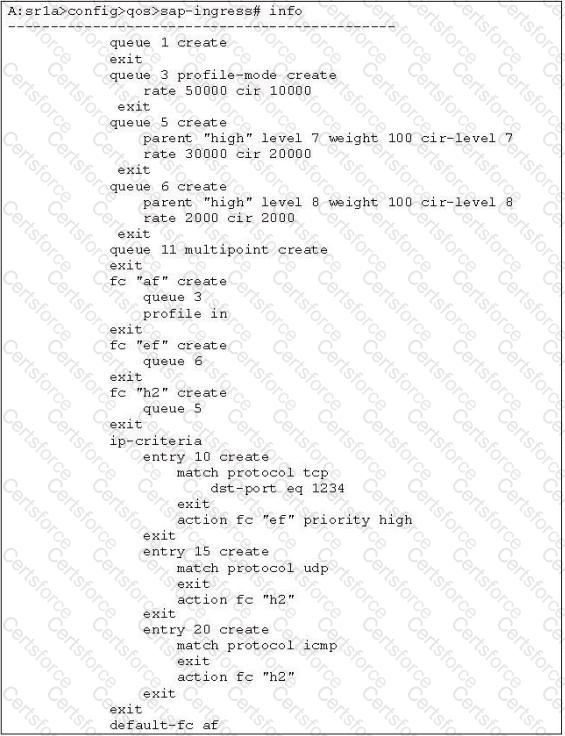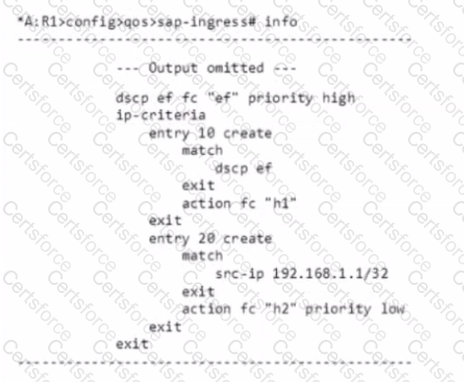Which of the following identify the port roles of the mesh SDPs?

A)

B)

C)

D)

Click the exhibit button below. A network operator has configured the SAP-ingress policy below. Ping traffic is expected in queue 3. However, the network operator notices that all traffic is placed in queue 1. What is the most probable reason for this?

What is the 6-bit binary representation of DSCP value AF21?
Which of the following statements about G.8032 Ethernet Ring Protection is FALSE?
Which of the following QoS functions does the slope-policy perform?
For the Carrier supporting Carrier (CSC) VPRN, which routes are advertised between CSC-PE1 and SCS-PE2?

Which of the following are examples of metrics for QoS?
Click the exhibit button below. Given the SAP-ingress policy, which of the following statements are TRUE? (Choose three)

Which of the following statements regarding egress FC and profile over-ride are TRUE? (Choose two)
Which of the following are characteristics of 802.1p? (Choose two)
The IP ToS field consists of ________ bits, of which ________are used. The _________most significant (first) bits define precedence.
Real-time rate limiting on the service ingress is a feature that performs_____________. Traffic above the defined PIR is ______________.
In the image shown above, the SAP-ingress policy is applied properly to a Nokia 7750 SR. A traffic stream is received from an IP address of 192.168.1.1 with DSCP set to EF. Which forwarding class and priority level is used for this traffic stream?

Which of the following statements regarding buffer pool allocation are FALSE? (Choose two)
Which of the following is an advantage of using shaping instead of policing?